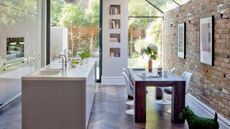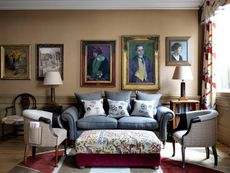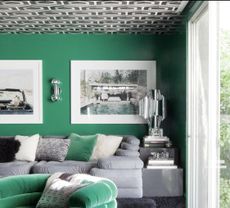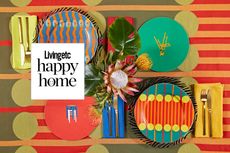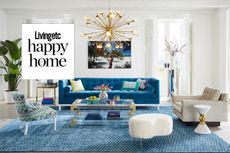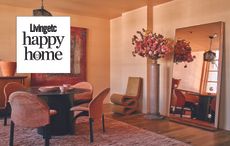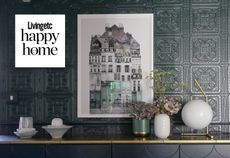5 biophilic design ideas that can make your home a happier place to be
Expert ideas from Oliver Heath about how bringing the outside in can truly boost your mood
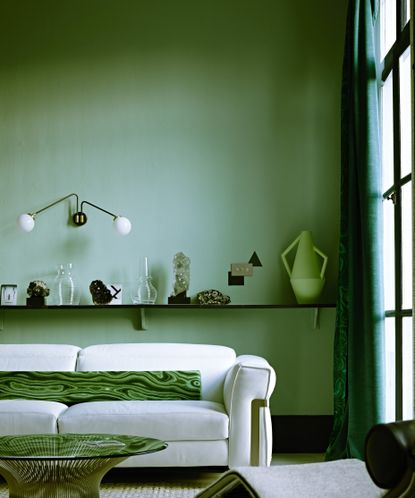
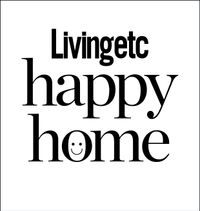
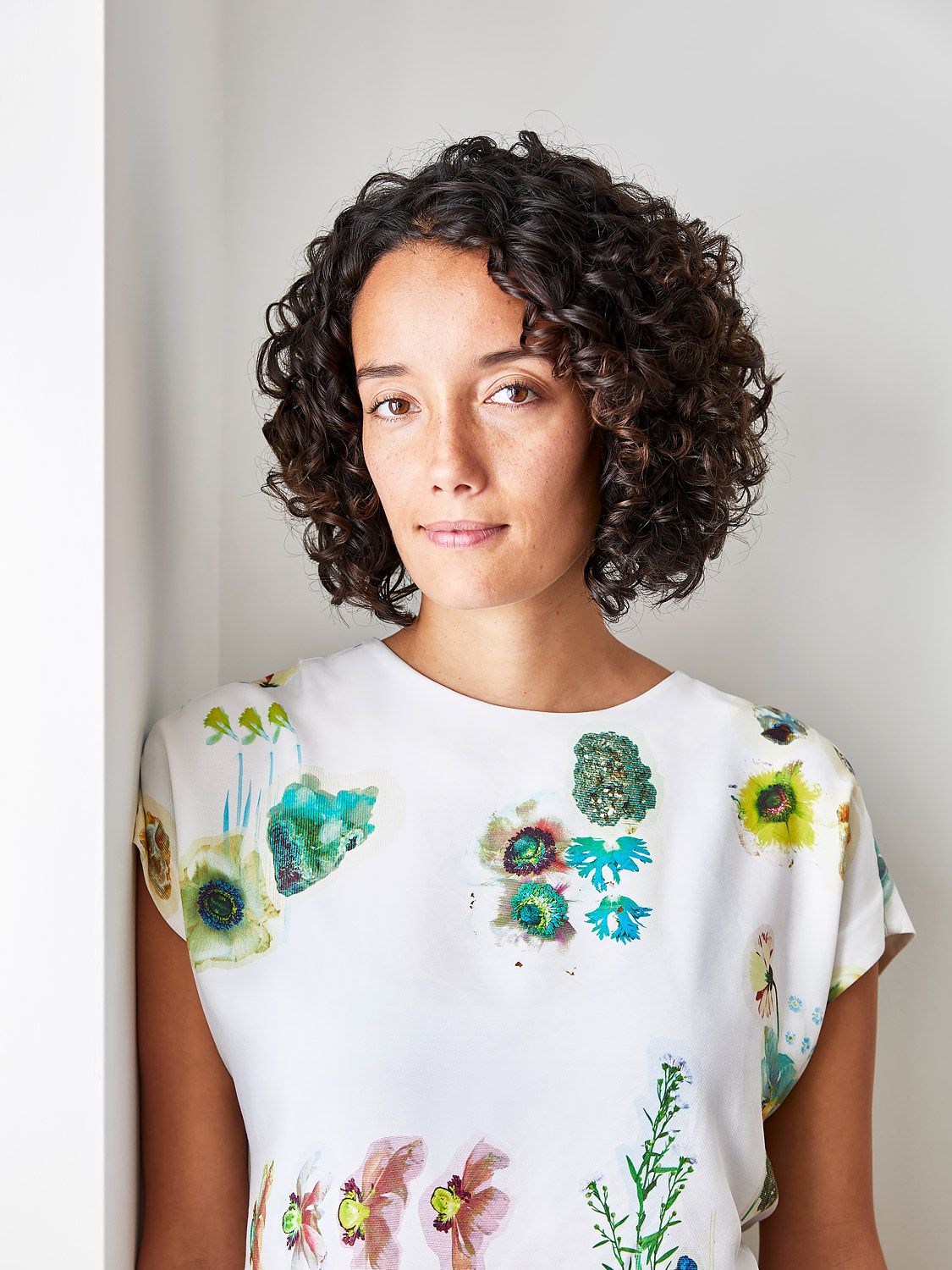
‘Think of a place where you feel most happy, calm and relaxed and picture it in your mind,’ instructs biophilic designer Oliver Heath. ‘The chances are you're envisaging somewhere that that has water – a stream, lake or sea view – and probably grass, trees, flowers, blue skies and sunshine. This is due to biophilia, the innate human attraction to nature, our desire to be in and around nature because it’s what make us feel good.’
‘For thousands of years we existed in very close connection to healthy forms of nature for our basic survival, so it was essential that we used our senses to recognize landscapes that could help us to thrive and flourish. We still have a genetic ability to identify a space that can support life, and when we’re in these settings we relax, are less stressed, sleep better and ultimately feel happier and more optimistic.’
‘Biophilic design brings the calming, natural visual cues that we know are able to support life into the spaces that are important to us through three core areas; by creating a direct connection to nature in the home, by evoking a feeling of nature in a built environment (using natural materials, colors, textures, patterns and even technology), and by creating spaces that support different physical and emotional states throughout the day.’
As one of the most uplifting principles of modern interior design, biophilic design can turn your home into a happy place. ‘Use design as a tool to make you feel as good and happy as possible – here are some key areas to focus on.’
Natural light

‘Top of the list is natural light,' Oliver says. 'It dramatically improves the quality of space and is dynamic, changing throughout the day and connecting you to the time of day, the season and the weather. Natural light also governs our circadian rhythms – our body's reactions to light and dark across a 24-hour period – which affects our mood and sleep patterns. Enhance and bring in as much as possible.’ Many modern kitchen ideas focus around bringing extra light into the space.
Sleep

‘Design your bedroom to support sleep – there's no better way to regulate your health than a good night's sleep,' Oliver says. This is why so many modern bedroom ideas tend to focus on calming shades. 'Reduce visual clutter, use colors that compliment each other soothingly, don't use overstimulating patterns, minimise dust, making sure you've got clean, fresh air in the room and introduce plants as they can remove carbon dioxide and produce oxygen at night to help you to sleep better (mother-in-law's tongue and English ivy are good for this).
Plants

It's no surprise that biophilic design tends to incorporate a lot of flowers and plants.
‘Bringing in plants directly connects you to nature, adds of visual texture and also introduces gentle, subtle movement into the home stop rooms feeling static,' Oliver says. 'They can modify temperature and humidity, and remove small levels of toxins. It’s also therapeutic and satisfying looking after them and seeing them develop.’
Color
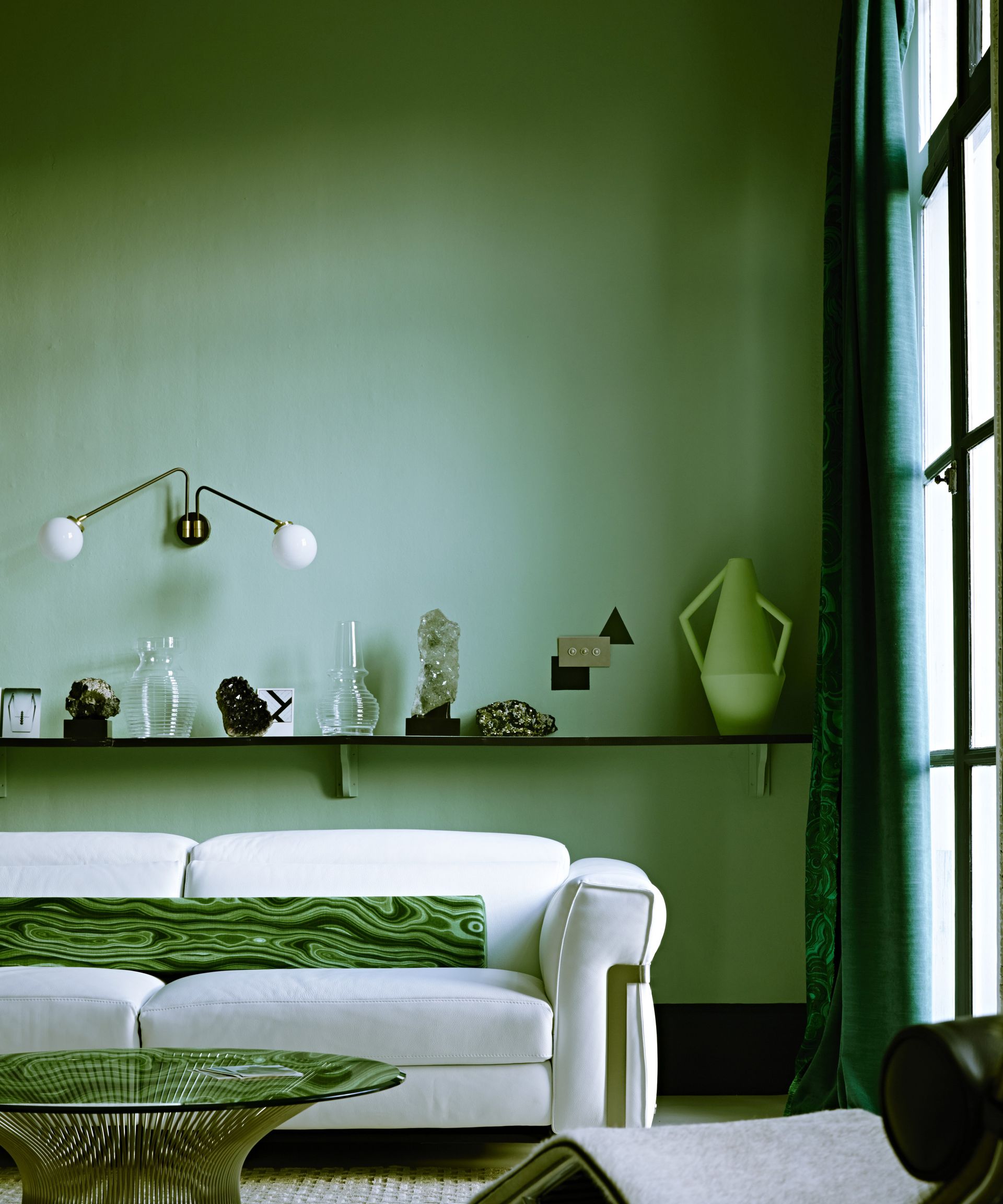
There is plenty of theory behind which colors we respond positively to, and why. ‘We react well to tones we've had good experiences of and we have all had a positive experience in nature, so use colors that emulate nature to bring that happiness indoors,' Oliver says.
'Blue reminds us of cool, calm pools of water (good for relaxing bedrooms and bathrooms), greens can be more energizing and remind us of the fresh shoots of spring (good for creative rooms) and yellow is a very positive and connecting color which makes us think of sunflowers and warmth (good for social spaces).’
Our edit of the best green paint is invaluable for decorating this way.
Nature outside the home

House in Norway by Oliver Heath Design
It helps to be able to see greenery, if you're lucky enough to live near any.
‘Create places to sit that have a view of nature.' Oliver says. 'Position a desk or chair near a window overlooking greenery so you can see subtle movements from outside – random gentle movements (‘non rhythmic sensory stimuli’) such as leaves swaying in the breeze or rippling water are very relaxing and restorative, and are proven to reduce stress.’
Learn more about biophilia and how human-centered design can improve wellbeing in Heath’s new online course, Biophilic Design in the Home
Be The First To Know
The Livingetc newsletter is your shortcut to the now and the next in home design. Subscribe today to receive a stunning free 200-page book of the best homes from around the world.
Amy Moorea Wong is a freelance interior design journalist with a decade of experience in contemporary print and digital editorial, previously News Editor at Livingetc. She writes on a broad range of modern design topics from news and interior zeitgeist to houses, architecture, travel and wider culture. She has a penchant for natural materials, surprising pops of colour and pattern and design with an eco edge.
-
 The 12 Best Table Lamps for Reading —I'm a Certified Bookworm (and Shopping Expert)
The 12 Best Table Lamps for Reading —I'm a Certified Bookworm (and Shopping Expert)When it comes to table lamps for reading, I don't mess around. If you're the same, this edit is for YOU (and your books, or course — and good recommendations?)
By Brigid Kennedy Published
-
 "It's Scandi Meets Californian-Cool" — The New Anthro Collab With Katie Hodges Hits Just the Right Style Note
"It's Scandi Meets Californian-Cool" — The New Anthro Collab With Katie Hodges Hits Just the Right Style NoteThe LA-based interior designer merges coastal cool with Scandinavian simplicity for a delightfully lived-in collection of elevated home furnishings
By Julia Demer Published
-
 What stress? Here's how your home renovation can be like therapy, according to an architect
What stress? Here's how your home renovation can be like therapy, according to an architectA happy home begins with briefing your designer or architect. Here's how to put your wellbeing at the center of it, as explained by an architect
By Hugh Metcalf Published
-
 3 secrets to displaying art in ways that make your home feel happy by Kit Kemp
3 secrets to displaying art in ways that make your home feel happy by Kit KempInterior designer Kit Kemp knows a thing or two about gallery walls, and here are her secrets for making your home feel happy
By Amy Moorea Wong Published
-
 The decor secrets to making your home a happier place to live by Martyn Lawrence Bullard
The decor secrets to making your home a happier place to live by Martyn Lawrence BullardInterior designer Martyn Lawrence Bullard reveals the final flourishes that elevate a home and boost your mood, too
By Amy Moorea Wong Published
-
 How to decorate to make your home feel happy by Yinka Ilori
How to decorate to make your home feel happy by Yinka IloriUsing paint and pattern to feel good is second nature to Yinka Ilori. Here's his advice for embracing that spirit yourself
By Amy Moorea Wong Last updated
-
 How to make your living room a happy place to be by Jonathan Adler
How to make your living room a happy place to be by Jonathan AdlerFill your living room with happiness with these expert tips by Jonathan Adler
By Amy Moorea Wong Published
-
 Paint your home happy with these expert tips by Kelly Wearstler
Paint your home happy with these expert tips by Kelly WearstlerUse paint to fill your home with happiness with these mood boosting ideas by designer Kelly Wearstler
By Amy Moorea Wong Published
-
 How to make your hallway feel happy by interiors expert Michelle Ogundehin
How to make your hallway feel happy by interiors expert Michelle OgundehinAdd happiness to your hallway with Michelle Ogundehin's expert decorating tips
By Amy Moorea Wong Published


